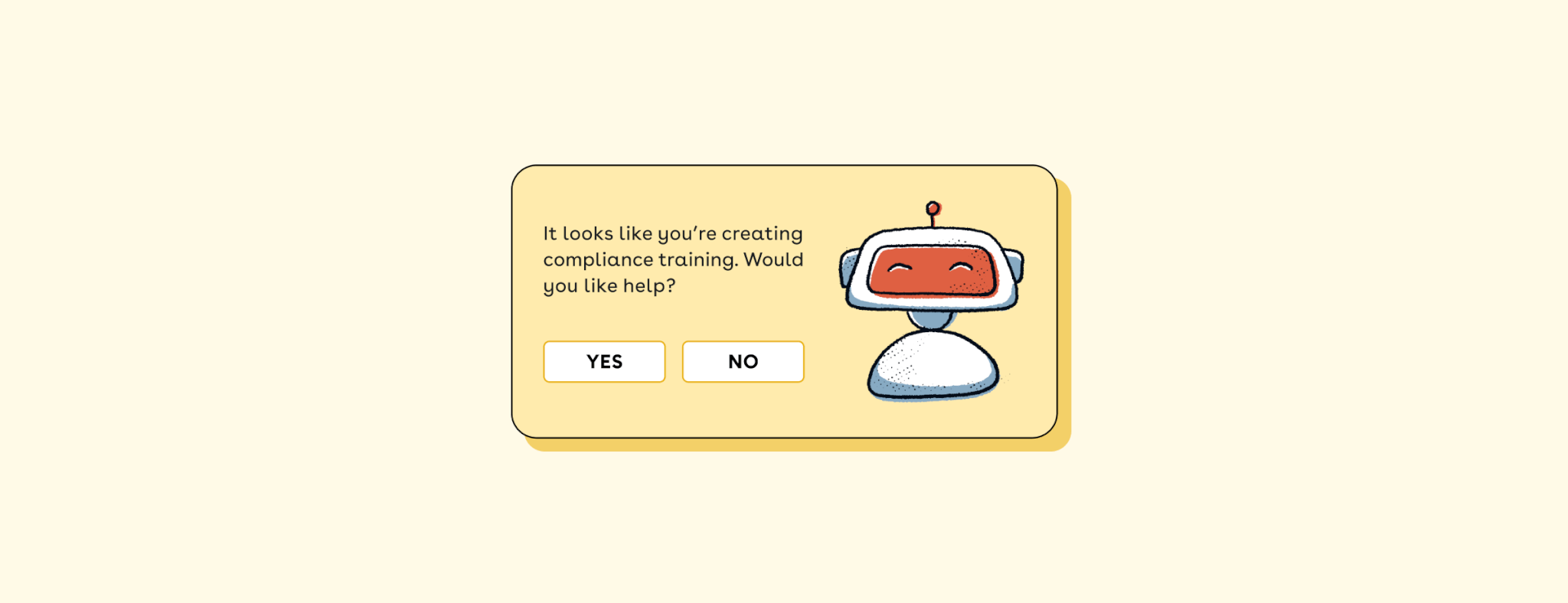This article was originally published to Medium on October 13th, 2020.
There’s a common saying in the startup world that you have to launch your product while you’re still embarrassed by it. In theory, this makes sense to me — there’s simply no substitute for live user feedback — but in practice, boy, can it be painful. It also relies on the idea that you have an actual product, which I cannot confidently say we did when my co-founder and I first launched Ethena. Our first pilot was quite literally an MVP, the bare minimum we could offer to companies as a solution for compliant harassment prevention training. And, as a first-time co-founder, I wasn’t just embarrassed; I was ready to put on the brakes.
I wasn’t unsure because I had, only two months before, quit my stable job to launch a company (well, not only that). The company where I’d worked previously made software for emergency services. My tolerance for risk until recently had been predicated on the product literally having life or death implications.
So, when we had the opportunity to launch a pilot of our harassment prevention training in only our second month as an incorporated company, I hesitated. When I say we didn’t have a product, I really mean it. This wasn’t a, “Oh no, we haven’t had time to thoroughly QA,” situation; we had no administrative experience at all. What we actually did have and felt good about was content, albeit embedded in emails to teams. I didn’t want to miss an opportunity like this, but it did feel embarrassing, maybe even reckless, to launch without an actual platform.
My co-founder Roxanne pushed me to reconsider. The deadline was driven by the new compliance deadline for New York companies, so we had to move it or lose it. Losing it was not an option, especially because the company interested in partnering was an ideal customer for us, a VC firm that wanted to enroll some of its portfolio companies. From the beginning, we’ve focused on supporting companies as they scale, and the feedback we would receive would be invaluable as we scaled.
We thought seriously about the goals of a pilot and what we could reasonably deliver. As our CTO, my concern was that we weren’t far enough along to get meaningful feedback. What if the learners responded to a bad (some could even say non-existent…) user experience and not the content we were trying to test? I sat with Roxanne’s push. We didn’t have the platform ready, but crucial parts of our product vision — engaging harassment prevention training that focused on culture change in addition to compliance — were there. Did it matter that for now it would be via email?
We took a deep breath and went for it. Unsurprisingly, users did flag the lack of admin experience. But, importantly, we got feedback on our content that told us we were headed in the right direction and gave us tactical ways to improve. It also illuminated areas for friction and opportunities to delight we hadn’t before considered.
Those early learnings were instrumental for us, and I was excited to take what we’d learned from our pilot and build a product (complete with an admin experience!) that I wasn’t embarrassed by this time. What a treat! Our now-slightly-larger team got to work. We built, we QA’d, and then we launched.
As it turned out, that launch was embarrassing too.
Research told us that engaging with users in shorter sessions more often was supported by learning science and by the EEOC, so we went all in… and annoyed our users with too-frequent emails.
Our last product feedback had made sense to me — calling our onboarding experience “white glove” didn’t camouflage the fact that we didn’t have a platform — but this one was more of a surprise. We’d done the research and tried something new, and our customers didn’t like it. It always stings a little to have a significant “needs to be improved” in your live product, but this was a fumble we had to make in front of real users; users didn’t start to think we’d be pinging them too often until they’d been on the platform for a little while. We made adjustments, got more feedback, and honed in on a training cadence that abides best practice and doesn’t bug our users. We couldn’t have figured this out without our embarrassing launch.
As our platform has grown, we have more tools at our disposal to constrain embarrassing launches (e.g. A/B testing a new feature with a smaller cohort of users). Our notifications now do things like arrive over Slack and, oh, link to a real application! But, this cycle of launch, be embarrassed, and learn big time hasn’t gone away, and much to my own surprise, I don’t want it to. We have found no substitute for putting a solution in front of our user base and seeing what they think, and we don’t want product maturity to mean that we’re no longer willing to innovate in public.









